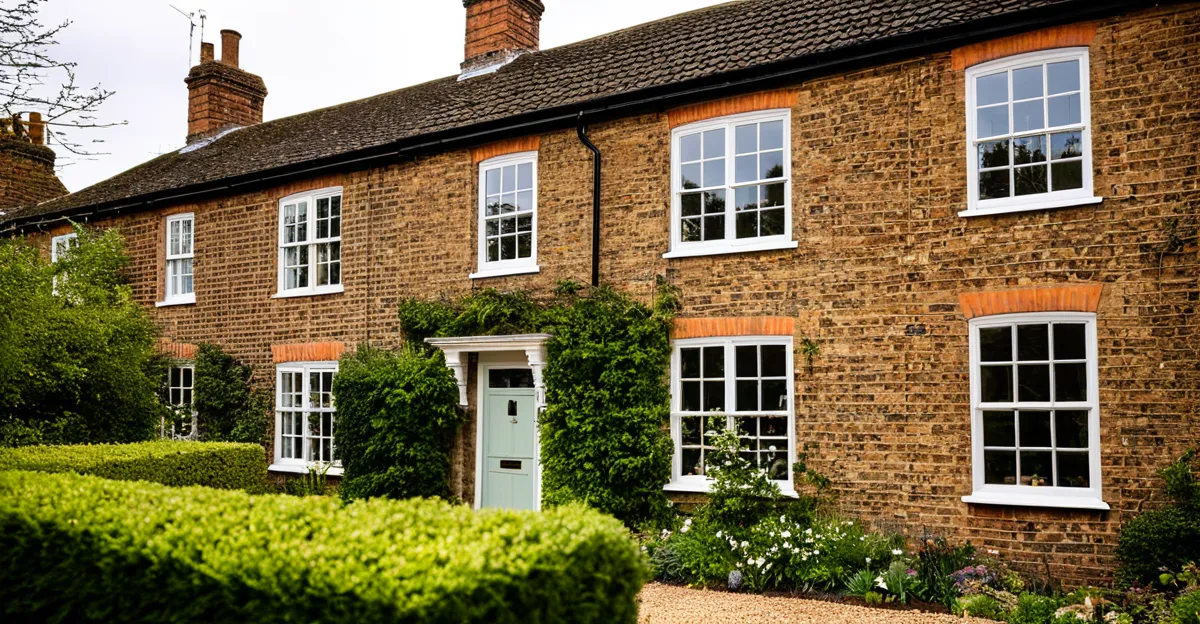Essential Insurance Requirements for Historic Properties
Understanding the nuances of protection for heritage homes
When securing historic home insurance, it is crucial to recognize both compulsory and recommended coverages tailored to the unique nature of these properties. Owners of listed buildings in the UK must comply with specific regulations that influence their insurance needs, particularly due to their listed building insurance requirements. Standard UK property insurance often falls short in addressing the conservation area stipulations and preservation mandates integral to historic properties.
Also to discover : How Do Property Insurance Rates in the UK Vary by Region?
Listed status significantly affects the type and extent of insurance needed. Insurers require detailed documentation, including professional valuations that reflect the true cost of restoration with period-appropriate materials and craftsmanship. Neglecting these valuation considerations can lead to underinsurance, leaving owners financially vulnerable if damage occurs.
Furthermore, compliance with local conservation area regulations demands that any repairs or rebuilding adhere strictly to established guidelines, which can increase costs and complicate claims. Therefore, an insurance policy for a historic home must cover these additional expenses and regulatory requirements to ensure comprehensive protection.
Topic to read : What Emerging Trends Are Shaping the Future of UK Property Insurance?
Understanding these specific needs helps owners make informed decisions, ensuring their treasured heritage is well guarded against unforeseen events.
Unique Coverage Challenges and Common Exclusions
Historic property coverage presents distinct challenges compared to typical home insurance policies in the UK. Standard policies often include policy exclusions for older or listed buildings, primarily because these properties involve materials and construction methods that differ significantly from modern homes.
One major issue is the exclusion of non-standard construction materials and features. For instance, traditional lime mortar, handmade bricks, or lead roofing are not commonly covered under standard insurance. These materials require specialist repairs, which are costly and time-consuming. Many insurers either exclude them or impose strict limits on cover, making claims difficult.
Restoration obligations add another layer of complexity. Owners of historic properties may be legally required to use specific specialist building techniques during repairs to preserve authenticity. This demand can increase claim expenses and delay resolutions, causing insurers to be hesitant or to exclude certain risks entirely.
Understanding these typical coverage gaps is crucial for owners. Tailored insurance policies that address the unique needs of historic buildings are often necessary to avoid unexpected out-of-pocket expenses and ensure proper protection.
Factors Influencing Premiums for Historic Home Insurance
When calculating insurance cost factors for historic properties, insurers consider several key elements. The age of the building plays a significant role, as older structures often require more specialised repair materials and expertise, increasing potential claim costs. Similarly, original construction materials—such as timber frames or traditional stone—can be costly to replace or restore, directly impacting historic property premiums.
Location also matters greatly in the risk assessment UK insurers conduct. Properties in flood-prone or subsidence-prone areas usually attract higher premiums due to increased risk exposure. Furthermore, the level of ongoing maintenance greatly influences cost: well-maintained homes are less likely to incur claims, potentially reducing premiums, whereas poorly maintained properties may prompt insurers to raise prices.
Historic homes face unique risks uncommon in modern buildings, such as subsidence caused by shifting foundations and the theft of valuable artefacts. These specialist factors form a vital part of the risk assessment UK insurers perform, reflecting the distinct challenges of insuring treasured but vulnerable properties. Understanding these nuances enables homeowners to better anticipate and manage their insurance expenses.
Legal Obligations and Compliance for UK Homeowners
Complying with regulations protects your historic asset
UK homeowners of historic or listed buildings face distinct legal requirements. Insurance for these properties is mandatory. This insurance must specifically cover the unique risks associated with historic assets, such as structural vulnerabilities and specialized reconstruction costs. Standard home insurance policies often do not suffice.
Owners must obtain planning permission before making alterations, even minor ones. This ensures compliance with heritage protection regulations designed to preserve the historic character and fabric of the building. Failing to secure appropriate permissions can result in legal penalties, forced restoration, or even demolition orders.
Non-compliance not only jeopardizes heritage conservation but also affects insurance claims. Insurers may refuse to cover damages if modifications were unauthorized. Additionally, owners risk fines and enforcement actions, which can be financially burdensome.
Understanding listed building legal obligations and staying updated with conservation laws is essential to meet compliance historic buildings standards. Consult with heritage specialists when planning changes to safeguard your property’s legacy and ensure lawful and insured ownership.
Choosing a Specialist Provider and Suitable Policy
Ensuring the right coverage for your historic property
Selecting from specialist insurance providers UK is crucial when insuring heritage or listed buildings. Unlike standard policies, historic property insurance policies cater specifically to the unique needs and risks associated with older constructions. These providers understand the complexities of maintaining and restoring period features, which makes their offerings more reliable.
When identifying insurance companies for heritage and listed buildings, look for those with proven experience in historic property insurance policies. This ensures they appreciate factors like traditional materials, conservation requirements, and the costs of using specialist craftsmen. Not all insurers cover these adequately, so relying on a specialist provider is a safer bet.
Comparing specialist insurers and standard policies reveals notable differences. Standard policies may exclude or limit coverage for features such as original woodwork or stonework, while specialist insurance providers UK include these aspects as standard. Moreover, some specialist policies offer agreed value coverage, meaning the insurer accepts pre-determined valuation, preventing underinsurance issues common with historic properties.
Evaluating policy features for suitability involves scrutinising terms like restoration clauses and coverage for unintended damage during repairs. Ensure the policy aligns with local regulations regarding listed building consent to avoid claim complications. Informed choices here protect both the property’s integrity and owners’ financial interests.
Tips for Maintaining Compliance and Preserving Insurance Validity
Maintaining ongoing compliance is crucial when owning a historic home to ensure insurance validity. Begin with regular property maintenance and thorough documentation of all repairs or alterations. Detailed records serve as evidence of upkeep and can expedite insurance claims if damage occurs.
Transparent communication with your insurer about any planned changes or repairs is essential. Many insurance policies require notification of modifications to prevent coverage issues. Failure to disclose alterations can lead to denied claims or policy cancellation.
Staying informed about regulatory updates specific to historic properties helps you adapt quickly. Local preservation laws and insurance requirements may change, impacting your coverage. Consult professionals familiar with maintenance historic homes to navigate evolving guidelines effectively.
By prioritizing these practices, homeowners protect their investment and uphold compliance, thus safeguarding their insurance coverage.


